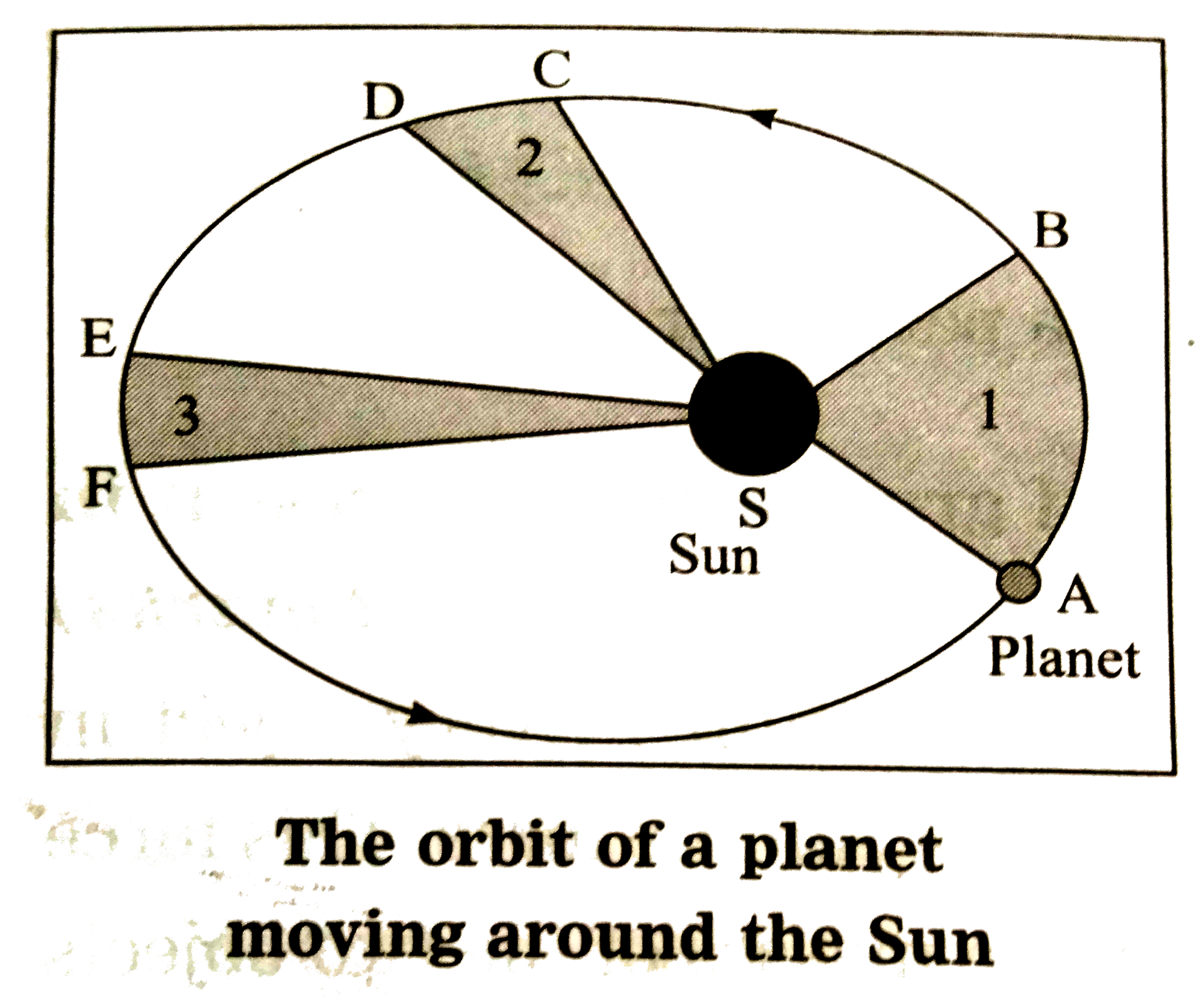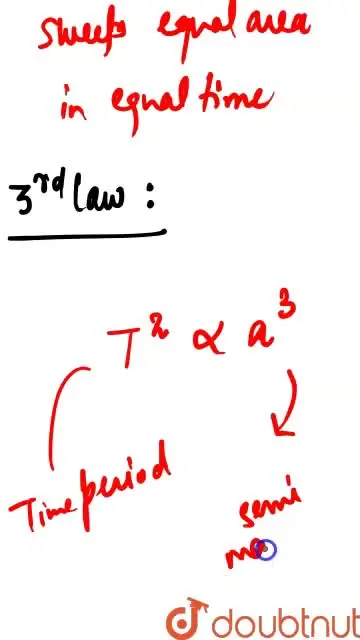Kepler's Law
Kepler's first law: The orbit of a planet is an ellipse with the Sun at one of the foci.
The adjoining figure shows the elliptical orbit of a planet revolving around the Sun. S denotes the position of the Sun.
Kepler's second law : The line joining the planet and the Sun Sweeps equal areas in equal intervals of time.
Area ASB=area CSD=area ESF.
Kepler's third law :
The square of the period of revolution of a plant around the sun is directly proportional to the cube of the mean distance of the planets from the Sun.
Thus , if r is the average distance of the planet from the Sun and T is its period of revolution , then,
T2∝r3, i.e. T2r3 =constant =K
For simplicity we shall assume the orbit to be a circle. In the adjoining figure, S denotes the poistion of the Sun, P denotes the position of a planet at a given instant and r denotes the radius of the orbit (≡ the distance of the planet from the Sun ). Here, the speed of the planet is uniform. It is
v=circumference of the circleperiod of revolution of the planet=2πrT
If m is the mass of the planet , the centripetal force exerted on the planet by the Sun (≡ gravitational force), F=mv2r
∴F=m(2πr/T)2r=4π2mr2T2r=4π2mrT2
Accordign to Kepler's third law,
T2=Kr3
∴F=42mrKr3=4π2mK(1r2)
Thus, F∝1r2 as 4π2mK is constant in a particular case.


Related Playlists
- BOOK - NAVNEET PUBLICATION - MAHARASHTRA BOARDCHAPTER - LAWS, RULES, UNITS AND DEFINITIONS EXERCISE - Periodic Classification of Elements6videos
LAWS, RULES, UNITS AND DEFINITIONS
- BOOK - NAVNEET PUBLICATION - MAHARASHTRA BOARDCHAPTER - LAWS, RULES, UNITS AND DEFINITIONS EXERCISE - Chemical Reactions and Equations20videos
LAWS, RULES, UNITS AND DEFINITIONS
- BOOK - NAVNEET PUBLICATION - MAHARASHTRA BOARDCHAPTER - HEATEXERCISE - NUMERICAL PROBLEMS FOR PRACTICE12videos
HEAT
- BOOK - NAVNEET PUBLICATION - MAHARASHTRA BOARDCHAPTER - LENSESEXERCISE - Numerical Problems For Practice20videos
LENSES
Similar Questions
Universal Law Of Gravitation (Recap)|We Already Know What Is Gravitational Constant (G)|What Is The Value Of G?|Questions|Application Of Gravitational Force In Solar System|Formation Of Tides|Kepler's Laws Of Planetary Motion|Kepler's First Law|Kepler's Second Law|Kepler's Third Law|Questions|Important Points|Summary
View SolutionState Kepler's laws of planetary motion.
View SolutionState Kepler's II law of planetary motion (law of areas)
View SolutionState Kepler's 3rd law of planetary motion.
View SolutionKepler's second law is known as
View SolutionKepler's First Law is known as
View SolutionKepler's Second Law is a consequence of
View SolutionKepler's second law is based on
View SolutionKepler's second law is a consequenc of
View SolutionKepler's second law (law of areas) is nothing but a statement of :
View Solution


